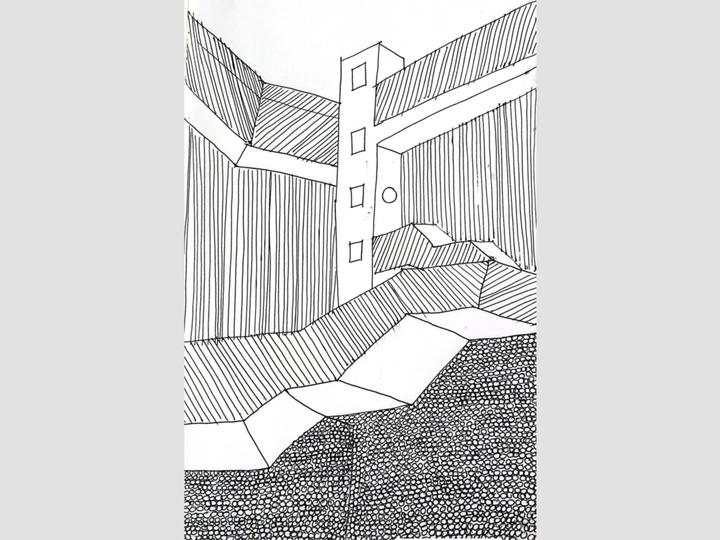Exploring Collective Housing Dynamics Through Film

Elmedinë Morina is an independent architect based in Brussels. She holds a Master’s degree in Architecture - Built Environment - Interiors from the Politecnico di Milano and possesses a strong passion for architecture and urbanism. Her interests extend beyond traditional architectural practice, including research, film and writing. Elmedinë’s background, aside from architecture, is built on Production Design, Art Direction and research.
She has participated in the postgraduate program at the University of Hasselt, Building Beyond Borders. Her work was exhibited at Z33 House for Contemporary Art, Design and Architecture in Hasselt as part of the “Same Same but Different” exhibition on circular economy and regenerative and distributive architecture.
Currently, Elmedinë’s primary focus is on practising architecture, and she is actively involved in independent research, delving into the future landscape of the architectural profession. Notably, she emphasises the importance of social engagement through various creative disciplines in shaping the profession to adapt to the changing world, committed to a socially aware approach to architecture.
Architecture is primarily about shelter and should adapt to context, not forced conformity. This study will explore collective housing as a response to the housing crisis by first examining housing history across different cultures.
Historically, shared living has been a response to social and political change. We need to study the external benefits of collective spaces. Many shared housing models have disappeared, and new ones have emerged. By examining both successful and failed examples of collective housing, we can extract valuable lessons for future-proof living models. Despite progressive policy efforts, Europe faces housing inequality. Case studies exist across Western Europe, but the Balkans remain understudied.
This project will study collective living models in the Balkans. Combining architectural, ethnographic, and filmic methods, the cultural, spatial, and social dynamics of each case will make the research accessible to all.
As families shrink and populations age, community-based living is becoming increasingly important. Shared housing offers a potential solution to loneliness, urban density, and sustainability, defining the future of housing.
How do cultures define shared space, and what marks the limit between public and private?
What architectural features support users’ interactions?
How do cultures see collective vs. individual territoriality?
What is the role of ageing in today's family composition?
The research will study 2–3 cases of collective or intergenerational housing in the Balkans, using:
Architectural analysis (spatial drawings, workshops)
Ethnographic research (interviews, participant observation)
Filmic documentation (daily life, spatial use, personal narrative)
The project will conclude with study workshops, publication, and an exhibition with inserts from the documentary.
The aim is to find common patterns of sharing across cultures and promote models that adapt to people, not the other way around.